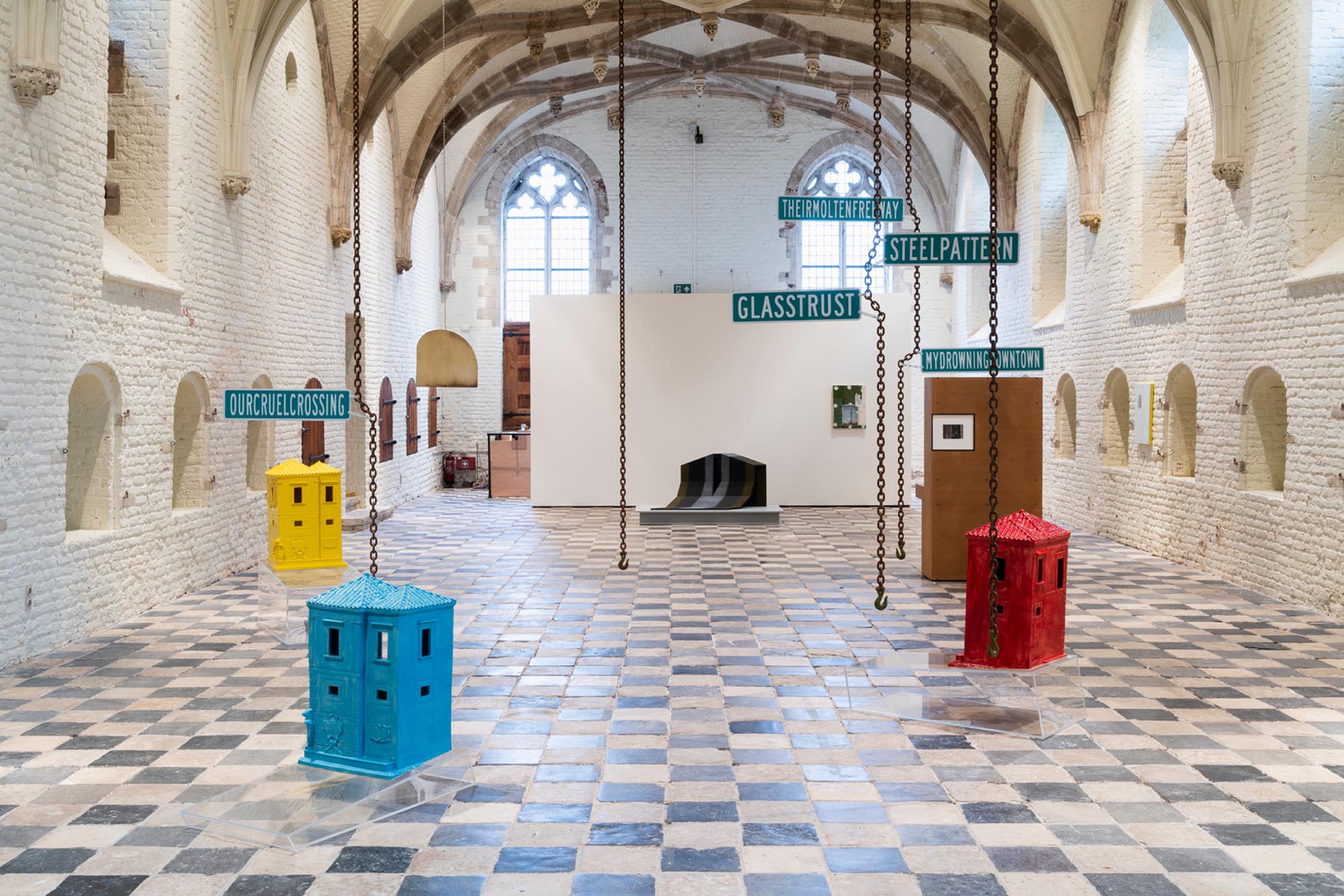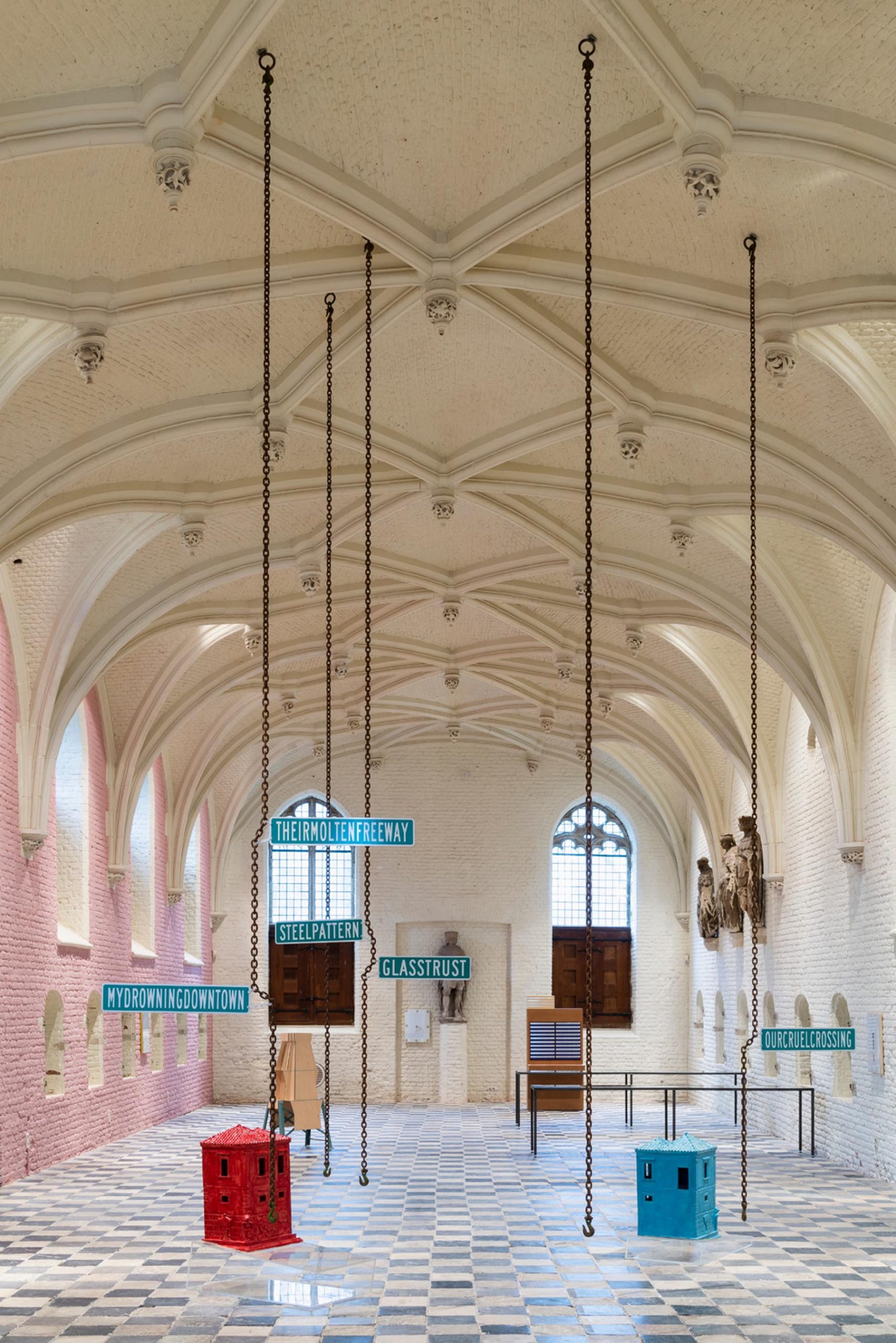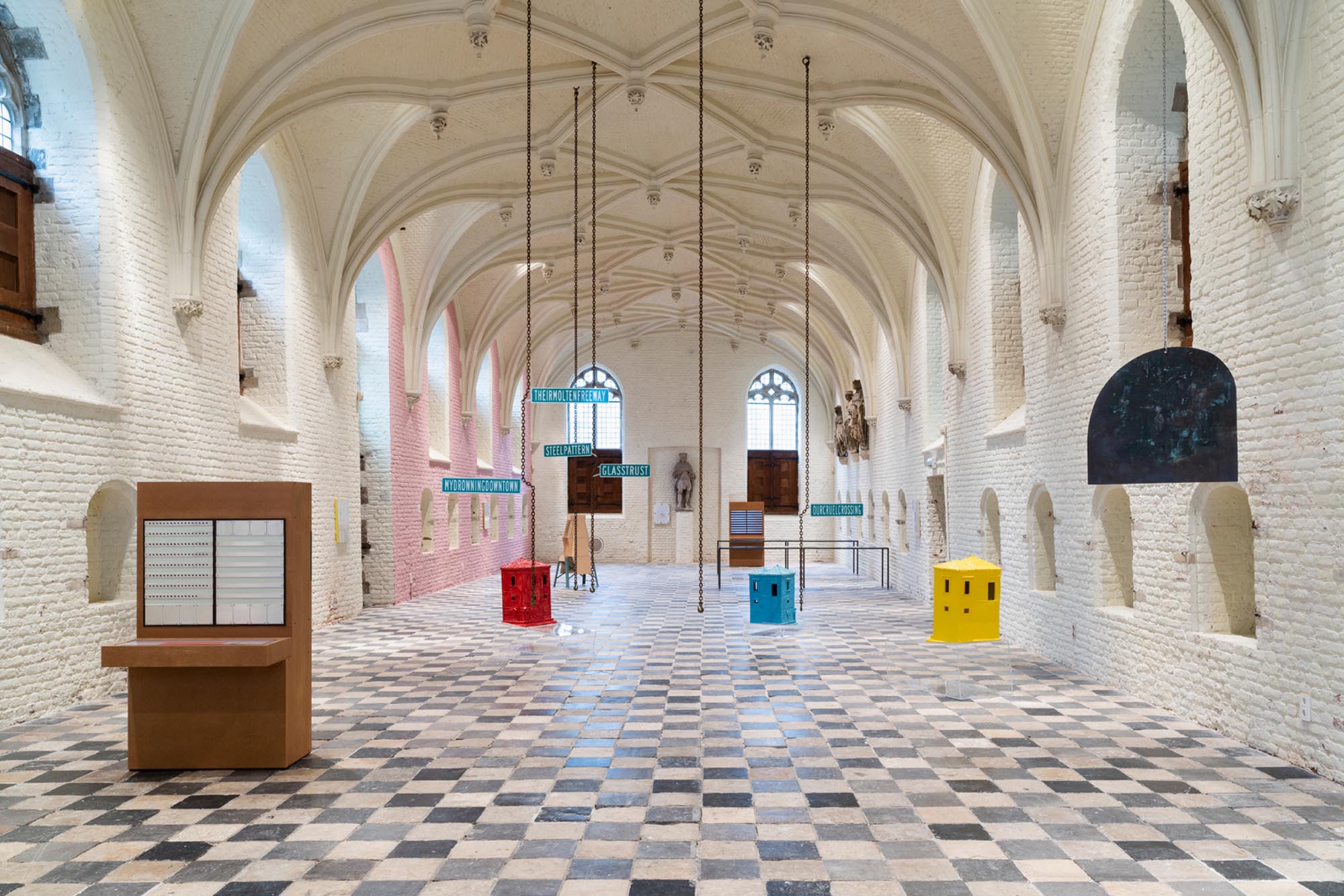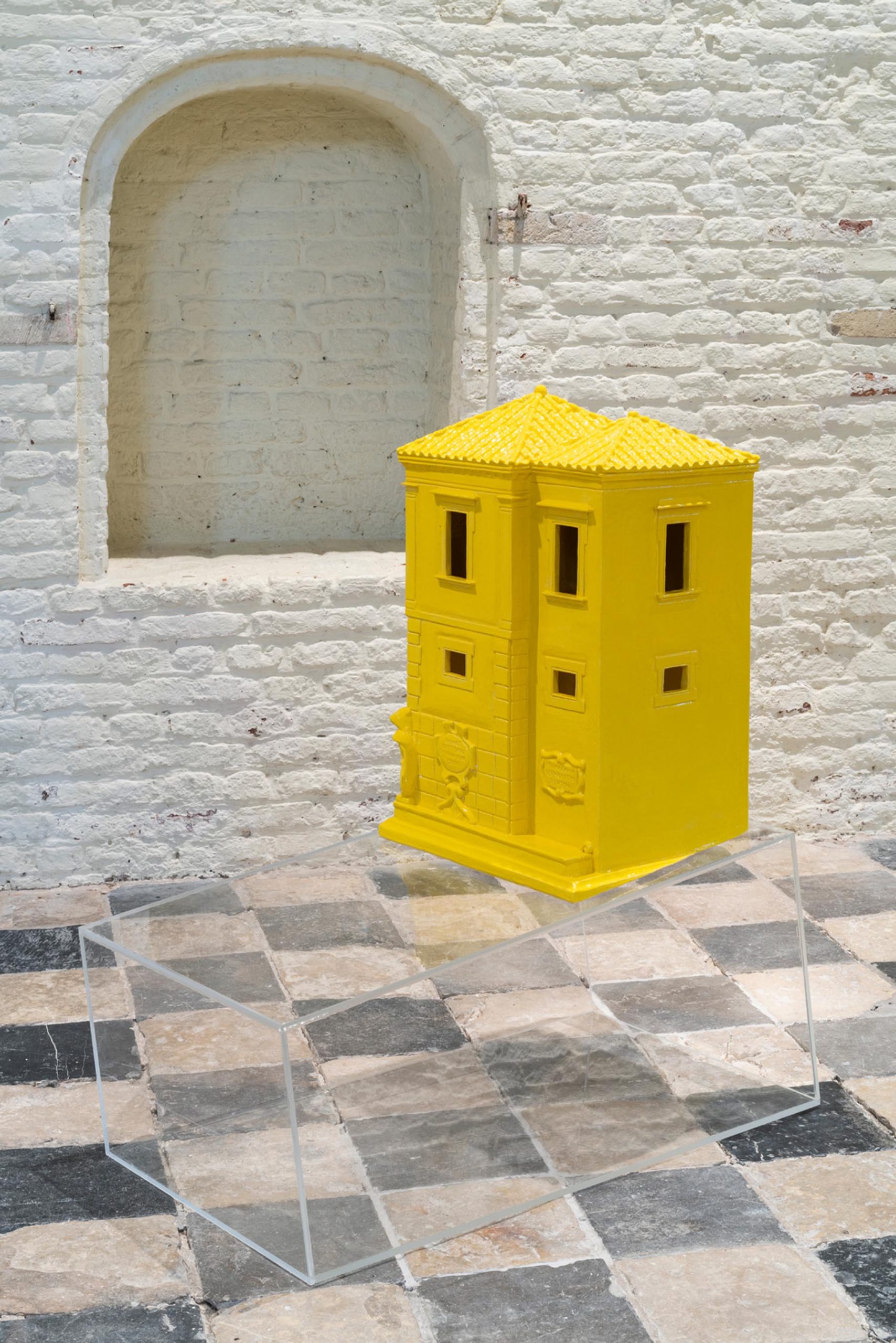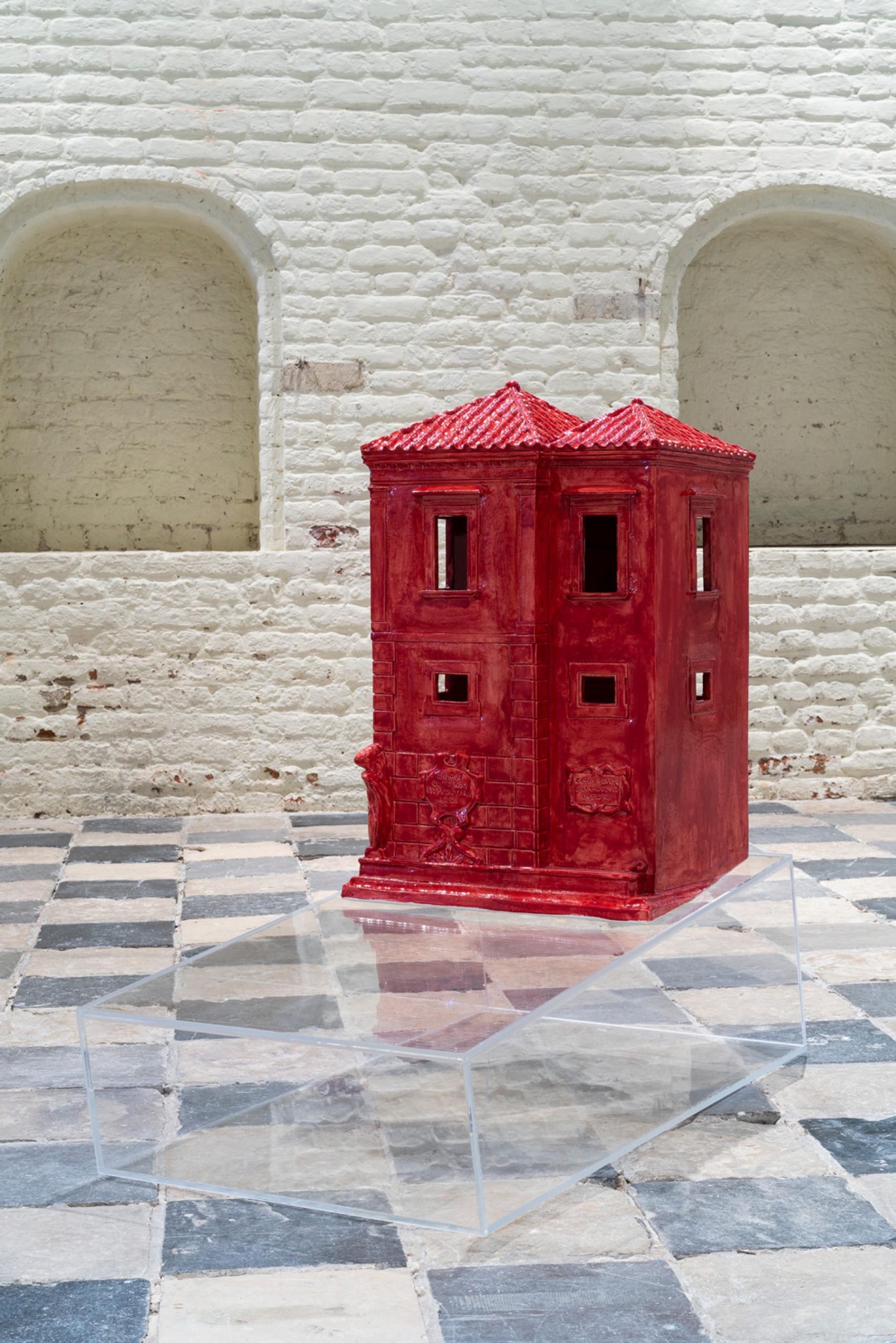CLOSE
2024
Heidi Horten Museum, Vienna, Austria (forthcoming)
PPC, Frankfurt, Germany (forthcoming)
06.08-08.10.2024
Skulptur Projekte Stockholm
Beau Travail
Stockholm, Sweden
Skulptur Projekte Stockholm
Beau Travail
Stockholm, Sweden
05.23-07.27.2024
Our Porcelain Thoughts
DREI
Cologne, Germany
Our Porcelain Thoughts
DREI
Cologne, Germany
11.04-05.18.2024
Dark Glasses
Layr
Vienna
Dark Glasses
Layr
Vienna
2023
15.12.2023 – 07.04.2024
Your and your vim
Aspen Art Museum
Colorado, USA
Your and your vim
Aspen Art Museum
Colorado, USA
02.09.2023-07.01.2024
Good Year
MARTa Museum Herford
Herford, Germany
Good Year
MARTa Museum Herford
Herford, Germany
03.05-14.06.2023
Nature wills it
The Ranch
Montauk, New York
Nature wills it
The Ranch
Montauk, New York
04.11-10.12.2022
Apple Red Cranberry House
Bortolami
New York
Apple Red Cranberry House
Bortolami
New York
27.08-11.12.2022
Forest Through The Trees
Laumeier Sculpture Park
St. Louis, Missouri
Forest Through The Trees
Laumeier Sculpture Park
St. Louis, Missouri
2022
30.04-30.07.2022
Auf dem Asphalt botanisieren gehen
Klosterfelde Edition
Berlin
Auf dem Asphalt botanisieren gehen
Klosterfelde Edition
Berlin
30.04-11.06.2022
Looking Through the Threshold
carlier gebauer
Berlin
Looking Through the Threshold
carlier gebauer
Berlin
17.02-28.10.2022
ALDO ROSSI’S SLEEPING ELEPHANT
Belvedere
Vienna, Austria
ALDO ROSSI’S SLEEPING ELEPHANT
Belvedere
Vienna, Austria
2021
26.10.2021–29.01.2022
Lives of an Object
ARCH
Athens, Greece
Lives of an Object
ARCH
Athens, Greece
12.06.-17.10.2021
Lichtenfels Sculpture
Austria
Lichtenfels Sculpture
Austria
28.04.-20.06.2021
I Think I Look More like the Chrysler Building
Vleeshal
Middelburg
I Think I Look More like the Chrysler Building
Vleeshal
Middelburg
27.03.2021-28.03.2021
Friend of a Friend
Warsaw
Poland
Friend of a Friend
Warsaw
Poland
2020
09.12.2020-30.01.2021
Babysteps into Masochism
Emanuel Layr
Vienna, Austria
Babysteps into Masochism
Emanuel Layr
Vienna, Austria
10.09.2020-07.11.2020
Fate of a cell / Η Τύχη ενός Κυττάρου
Martinos
Athens
Fate of a cell / Η Τύχη ενός Κυττάρου
Martinos
Athens
19.09.2020-31.10.2020
Ice to Gas
Pedro Cera
Lisbon
Ice to Gas
Pedro Cera
Lisbon
11.09.2020-17.19.2020
Various Others
Sperling, München
Munich, Germany
Various Others
Sperling, München
Munich, Germany
09.11.2019-08.03.2020
R.M.M. Rockefeller Center
Rockefeller Center
New York, NY
R.M.M. Rockefeller Center
Rockefeller Center
New York, NY
09.11.2019-08.03.2020
L’homme qui marche
Kunsthalle Bielefeld
Bielefeld, Germany
L’homme qui marche
Kunsthalle Bielefeld
Bielefeld, Germany
2019
27.09.2019―26.01.2020
My Fetish Years
Museum für Gegenwartskunst
Siegen, Germany
My Fetish Years
Museum für Gegenwartskunst
Siegen, Germany
11.01.―16.02.2019
Germanic Artifacts
Bortolami
New York, USA
Germanic Artifacts
Bortolami
New York, USA
2018
13.10.―22.12.2018
Positioner
Matthew Marks
Los Angeles, USA
Positioner
Matthew Marks
Los Angeles, USA
15.05.―21.07.2018
THEMOVE
Emanuel Layr Gallery
Vienna, Austria
THEMOVE
Emanuel Layr Gallery
Vienna, Austria
03.03.―13.05.2018
An Idea of Late German Sculpture; To The People Of New York, 2018
Kunsthalle Zürich
Zürich, Switzerland
An Idea of Late German Sculpture; To The People Of New York, 2018
Kunsthalle Zürich
Zürich, Switzerland
09.03.―22.07.2018
Between The Waters
Whitney Museum of Art
New York, USA
Between The Waters
Whitney Museum of Art
New York, USA
17.03.―28.04.2018
Embrassade
Fons Welters
Amsterdam, Netherlands
Embrassade
Fons Welters
Amsterdam, Netherlands
2017
19.01.―08.04.2017
Year Of The Monkey
Galerie Emanuel Layr
Rome, Italy
Year Of The Monkey
Galerie Emanuel Layr
Rome, Italy
28.04.―30.07.2017
SCHREI MICH NICHT AN, KRIEGER!
Schirn Kunsthalle
Frankfurt, Germany
SCHREI MICH NICHT AN, KRIEGER!
Schirn Kunsthalle
Frankfurt, Germany
09.04.―30.05.2017
Vertical Gardens
Antenna Space
Shanghai, China
Vertical Gardens
Antenna Space
Shanghai, China
03.06.―03.09.2017
Die Kommenden
Sprengel Museum
Hannover, Germany
Die Kommenden
Sprengel Museum
Hannover, Germany
14.09.―25.10.2017
in awe
Kunsthalle Exnergasse
Vienna, Austria
in awe
Kunsthalle Exnergasse
Vienna, Austria
06.2017
Art Basel Parcours
Art Basel
Basel, Switzerland
Art Basel Parcours
Art Basel
Basel, Switzerland
2016
07.06.―11.09.2016
Outrageous Acts and Everyday Rebellions
Kaufmann Repetto
Milan, Italy
Outrageous Acts and Everyday Rebellions
Kaufmann Repetto
Milan, Italy
28.01.―27.02.2016
RUN, RUN, RUNWAY
Golsa
Oslo, Norway
RUN, RUN, RUNWAY
Golsa
Oslo, Norway
27.02.―26.03.2016
Heartbreak Highway
Real Fine Arts
New York, USA
Heartbreak Highway
Real Fine Arts
New York, USA
17.06.―27.08.2016
My History of Flow
S.A.L.T.S.
Basel, Switzerland
My History of Flow
S.A.L.T.S.
Basel, Switzerland
04.07.―16.09.2016
fat center trash land 1―7, 2016
Small scale Sculpture triennial Fellbach
Fellbach, Germany
fat center trash land 1―7, 2016
Small scale Sculpture triennial Fellbach
Fellbach, Germany
09.09.―05.11.2016
Fieber
Emanuel Layr Gallery
Wien, Austria
Fieber
Emanuel Layr Gallery
Wien, Austria
04.07.―16.09.2016
In Bed with M/L Artspace
9th Berlin Biennale
Berlin, Germany
In Bed with M/L Artspace
9th Berlin Biennale
Berlin, Germany
03.12.2016―12.02.2017
Available Light
Kunstverein Braunschweig
Braunschweig, Germany
Available Light
Kunstverein Braunschweig
Braunschweig, Germany
2015
2015
Surrounding Audience
The New Museum Triennial
New York, USA
Surrounding Audience
The New Museum Triennial
New York, USA
09.2015
Emerging Artist Fellowship Exhibition
Queens
New York, USA
Emerging Artist Fellowship Exhibition
Queens
New York, USA
26.02.―04.04.2015
Looking at you (revived) again
Off Vendom
New York, USA
Looking at you (revived) again
Off Vendom
New York, USA
28-05.―16.05.2015
One step away from further Hell
Vilma Gold
London, UK
One step away from further Hell
Vilma Gold
London, UK
23.11.2015―08.01.2016
National Gallery 2―Empire Map
Chewday’s
London, UK
National Gallery 2―Empire Map
Chewday’s
London, UK
22.02.―05.04.2015
The problem today is not the other but the self
MINI/Goethe-Institut Ludlow 38
New York, USA
The problem today is not the other but the self
MINI/Goethe-Institut Ludlow 38
New York, USA
2014
09.05.2014-19.07.2014
Warm Math
Balice Hertling, New York
New York
Warm Math
Balice Hertling, New York
New York
05.2014
Frieze New York
Frieze Art Fair at Randall’s Island
New York, USA
Frieze New York
Frieze Art Fair at Randall’s Island
New York, USA
02.05.―07.06.2014
Bloomington: Mall Of America
Bortolami Gallery
New York, USA
Bloomington: Mall Of America
Bortolami Gallery
New York, USA
27.04.―01.06.2014
YES, I’M PREGNANT
Skulpturen museum Glaskasten
Marl, Germany
YES, I’M PREGNANT
Skulpturen museum Glaskasten
Marl, Germany
22.03.―17.05.2014
Geburt und Familie
White Flag Projects
Saint Louis, USA
Geburt und Familie
White Flag Projects
Saint Louis, USA
08.―09.2014
Piracanga Freedom?
Two Hotel, Piracanga Beach
Bahia, Brazil
Piracanga Freedom?
Two Hotel, Piracanga Beach
Bahia, Brazil
06.06.―14.08.2014
Chat Jet (Part 2), Sculpture in Reflection
Künstlerhaus KM
Austria
Chat Jet (Part 2), Sculpture in Reflection
Künstlerhaus KM
Austria
06.06.―03.08.2015
Revelry
Kunsthalle Bern
Bern, Switzerland
Revelry
Kunsthalle Bern
Bern, Switzerland
13.09.―18.10.2014
DIE
Parisa Kind
Frankfurt, Germany
DIE
Parisa Kind
Frankfurt, Germany
2013
14.12.2013-08.02.2014
Soft Wear
Sandy Brown
Berlin
Soft Wear
Sandy Brown
Berlin
24.02.―21.04.2013
From One Artist To Another
Kunstverein Wiesbaden
Germany
From One Artist To Another
Kunstverein Wiesbaden
Germany
13.09.―18.10.2013
On Thomas Bayrle
The Artist’s Institute
New York, USA
On Thomas Bayrle
The Artist’s Institute
New York, USA
05.2013
The Doors
Skulpturenpark Köln
Köln, Germany
The Doors
Skulpturenpark Köln
Köln, Germany
27.06.―09.08.2013
Freak Out
Greene Naftali Gallery
New York, USA
Freak Out
Greene Naftali Gallery
New York, USA
27.09.―09.11.2013
Love of Technology
Museum of Contemporary Art
North Miami, USA
Love of Technology
Museum of Contemporary Art
North Miami, USA
2012
05.02.2012-22.04.2012
Hang Harder
Neuer Aachener Kunstverein
Aachen, Germany
Hang Harder
Neuer Aachener Kunstverein
Aachen, Germany
12.2012
Lena Henke: First Faces, book launch at Karma Books, New York
Karma
New York, NY
Lena Henke: First Faces, book launch at Karma Books, New York
Karma
New York, NY
13.01.2012-19.02.2012
If I had eight hours to chop down a tree, I would spend six sharpening my axe
Kunstraum Riehen
Basel, Switzerland
If I had eight hours to chop down a tree, I would spend six sharpening my axe
Kunstraum Riehen
Basel, Switzerland
01.06.―29.07.2012
Core, Cut, Care
Oldenburger Kunstverein
Germany
Core, Cut, Care
Oldenburger Kunstverein
Germany
14.09.―21.10.2012
H․ H․ Bennett, Lena Henke and Cars
1857
Oslo, Norway
H․ H․ Bennett, Lena Henke and Cars
1857
Oslo, Norway
2011
15.06.―07.08.2011
Andrei Koschmieder puts
Real Fine Arts
New York, NY
Andrei Koschmieder puts
Real Fine Arts
New York, NY
23.04.―18.06.2011
Schlangen im Stall, “snakes in the barn”
Galerie Parisa Kind Frankfurt
Frankfurt am Main, Germany
Schlangen im Stall, “snakes in the barn”
Galerie Parisa Kind Frankfurt
Frankfurt am Main, Germany
2010
05.2010
WIR UEBER UNS
Neue Alte Bruecke Frankfurt
Frankfurt am Main, Germany
WIR UEBER UNS
Neue Alte Bruecke Frankfurt
Frankfurt am Main, Germany
08.2010
you have four eyes, (First ladies)
V 8
Karlsruhe, Germany
you have four eyes, (First ladies)
V 8
Karlsruhe, Germany
10.2010
Scandinavian blonde
Mousonturm
Frankfurt, Germany
Scandinavian blonde
Mousonturm
Frankfurt, Germany
28.11.2009 - 23.02.2010
Stone Temple Playground Collection
Kornhauschen Aschaffenburg
Aschaffenburg, Germany
Stone Temple Playground Collection
Kornhauschen Aschaffenburg
Aschaffenburg, Germany
28.11.2009 - 23.02.2010
Tokyo Hotel und deine Mutter
Literaturhaus
Frankfurt, Germany
Tokyo Hotel und deine Mutter
Literaturhaus
Frankfurt, Germany
Close
Close
28.04.-20.06.2021
I Think I Look More like the Chrysler Building
Vleeshal
28.04.-20.06.2021
I Think I Look More like the Chrysler Building
Vleeshal
Middelburg
Text by: Julia Mullié
I think I look more like the Chrysler Building
“I am supposed to be the Grand Duchess Anastasia, but I think I look more like the Chrysler Building!” It is exclaimed by a somewhat disappointed Roger DeBris, the flamboyant character from Mel Brooks’ American comedy The Producers, who has dressed up and assesses his own costume. The title of this exhibition alludes to an important question: how does our body relate to urban space? The city shows similarities with the human body in function and characteristics. This relationship between city and body also manifests itself in our use of language. Consider for example the way we use words from the domain of architecture and city planning to describe social and personal matters, such as “team building”, “breaking through the glass ceiling”, or “the walls have ears”.
Architecture can enable us to position ourselves within the world and to define ourselves in relation to others. The artists in I Think I Look More like the Chrysler Building show that you can also reposition and redefine yourself by imagining a different architecture. This is necessary because architecture and urban planning in the West are often all too one-sidedly based on the idea of creating a Utopia. The proposed solutions and grids may be ideal in theory, but are often detached from the subjective experience of everyday life. By manipulating their environment—or the other way around; by complying with it—the artists in this exhibition explore ways to relate to their surroundings in a more personal way.
The word “space” alone already contains a paradox: on the one hand it refers to demarcation, on the other hand to the infinite. In addition to a physical dimension, space also has a social dimension. In 1929 Virginia Woolf wrote A Room of One's Own in which she reflects upon the following question: Where are you truly free as a woman? Within the walls of your own room or in the world outside?
The artists in I Think I Look More like the Chrysler Building create personal spaces that allow them to navigate through the public ones. The public spaces assigned to us are mostly based on rational principles and rooted in economic motives. They have a normalizing power that also has a major psychological and social impact. To counter this, these artists collect and assemble materials that reflect themselves, and create imaginary landscapes that—unlike actual landscapes—can define and represent the individual. Thanks to architecture and decoration, we can create spaces that allow us to live our lives the way we want, outside the normative frameworks of society.
Kasper Bosmans, Lena Henke, Win McCarthy, Annelies Planteijdt and Diane Simpson each navigate through the urban landscape in their own way, but they all investigate similar issues: how can our environment be mapped? To what extent are the body and psyche subject to this environment? And can the body and the city influence each other?
Vleeshal would like to thank Bortolami Gallery, New York, THE EKARD COLLECTION and Galerie Fons Welters, Amsterdam, for their generous support.
Lena Henke (Germany, 1982) expands the range of meaning of traditional sculpture by incorporating questions of femaleness and the production of power relations in urban space. In doing so, she not only engages the myth of masculinity; she also works with the strands of historical tradition—the questions of pedestal and space—to interrogate the logic of sculptural representation and representability. She holds the reins with great self-assurance, controlling the representation of women's bodies and its intervening in the mechanisms of urban architecture. It is Henke’s far-reaching reflections on the capacity of the sculptural that enable her, conversely, to grasp urbanity as a historically evolved sculpture, whose social mechanisms of inclusion and exclusion can be altered and redefined by means of targeted interventions.
The three houses installed in the center of the Vleeshal are ceramic miniatures of the "crooked house" (1552), which is part of the famous “Park of Monsters” in Bomarzo (Italy), a mannerist sculpture park commissioned by Pier Francesco Orsini in the 16th century. The clear plexi glass plinths bear witness to Middleburg’s geographical location surrounded by water on a peninsula in Zeeland (Netherlands). Each of the pedestals has a different hight and thereby various angles, while evoking the idea of the houses sitting on the surface of water or gliding above a block of ice. Henke’s fascination for Surrealism and in particular by the art movement’s close relationship to psychoanalysis, humor and the subconscious are at play here.
Vleeshall's significant floor pattern stays visible underneath the translucent plinths and evokes memories of New York’s famous urban street grid. Above this quasi city map hang green street signs, dangling on long rusty chains and hooks, which where formerly used in meat production. In its aesthetics reminiscent of the street and avenue signage in New York, the imaginary names are based on puns like “STEELPATTERN" and “MYDROWNINGDOWNTOWN”, bringing together emotional states with artistic materials and names of urban places. In connecting the “city” with the “sky”, the ceiling with the floor, Henke emphasises the specific spatiality of the Vleeshalle and creates an expanded sense of (urban) space.
